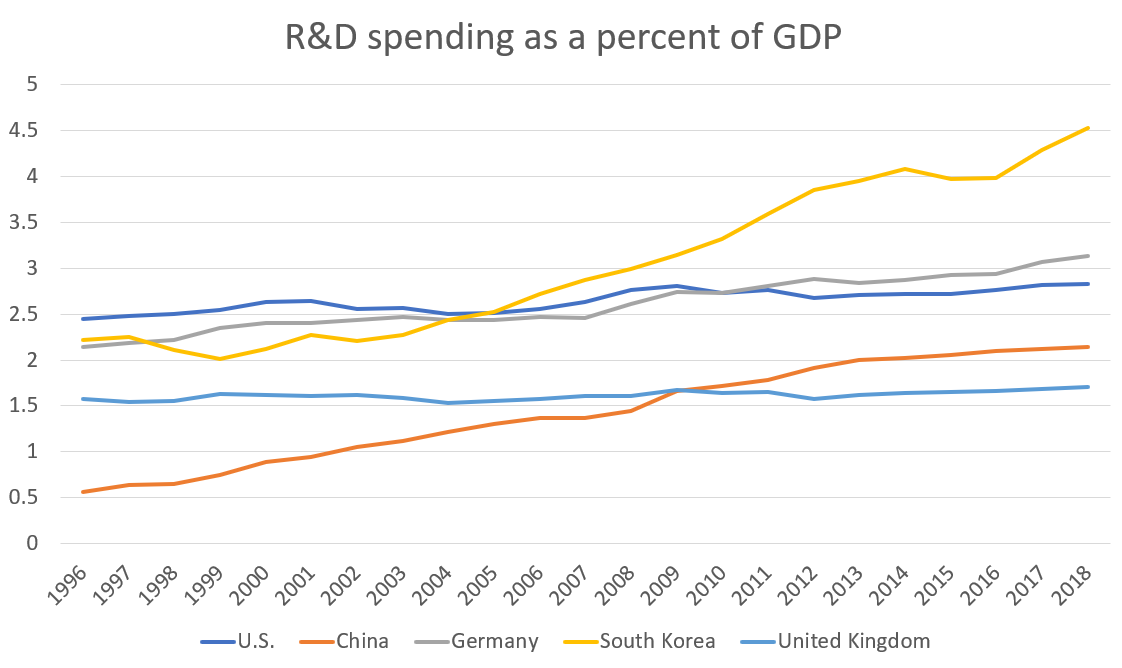America needs more basic research
We're not in a crisis, but we could benefit from spending more
If there’s one story from the past two years that should make you more optimistic about the United States of America, it’s mRNA vaccines. It’s the kind of tale that seems designed for a screen adaptation. A solitary genius (Katalin Karikó) immigrates to the U.S. and spends decades toiling in relative obscurity, but eventually convinces companies to try her invention. Venture capital corporate capital patiently funds two startups (BioNTech and Moderna) that slowly develop the technology over many long, unprofitable years. Then the big world-shattering crisis hits, and suddenly mRNA vaccines arrive in the nick of time to save millions of lives.
Science!!
This story underscores how important basic research is to the American industrial model. This is the country that sequenced the human genome, created quantum electrodynamics, and invented the transistor and the laser and Crispr. This was the country that landed humans on the moon. Americans conceived of the chemical potential and covalent bonding, discovered the neutrino and the quark, and invented plastic and the personal computer and the MRI.
As Jonathan Gruber and Simon Johnson have chronicled, discoveries and inventions have consistently flowed downstream from American research efforts, generating new industries that have maintained American industrial dominance across the decades. Quite a few economics papers have shown how much industry depends on science, as evidenced by how dependent patents are on scientific journal articles. Azoulay et al. (2019) demonstrate how private-sector innovations in the biomedical space are crucially dependent on NIH-funded research. And so on.
And science spending doesn’t just line the pockets of entrepreneurs and investors — it makes us richer as a country. Basic economic theory tells us that spending on research and development is extremely important for economic growth. As Jones and Summers showed in a paper last year, under a very wide range of assumptions, the money America spends on research and development ends up paying itself back several times over in the form of sustained economic growth. Kogan et al. (2019) find that “technological innovation accounts for significant medium-run fluctuations in aggregate economic growth and [total factor productivity]”.
If anything, research spending is more important for America now than in the past. With the tailwinds that propelled U.S. GDP growth in the past — expanding trade, increasing educational attainment, mass immigration, and the build-out of the suburbs — now flagging, technological innovation will have to shoulder correspondingly more of the burden of sustaining growth. And with technological competition from China heating up, it’s crucial that the U.S. preserve our edge.
So at this crucial moment, it’s important that we’re spending enough on research. But are we?
Science spending isn’t in crisis, but we should do more anyway
In terms of total R&D spending as a percent of GDP, the U.S. is actually not doing terribly. We’ve slightly increased our percentage in recent years, and we’re still ahead of China, though Germany has passed us and South Korea is way ahead:
But these not-so-bad numbers might be deceiving. The sources of U.S. research funding have changed drastically over the years, with government spending falling and private sector spending rising to take its place. This could be bad news, for a number of reasons.
Keep reading with a 7-day free trial
Subscribe to Noahpinion to keep reading this post and get 7 days of free access to the full post archives.



